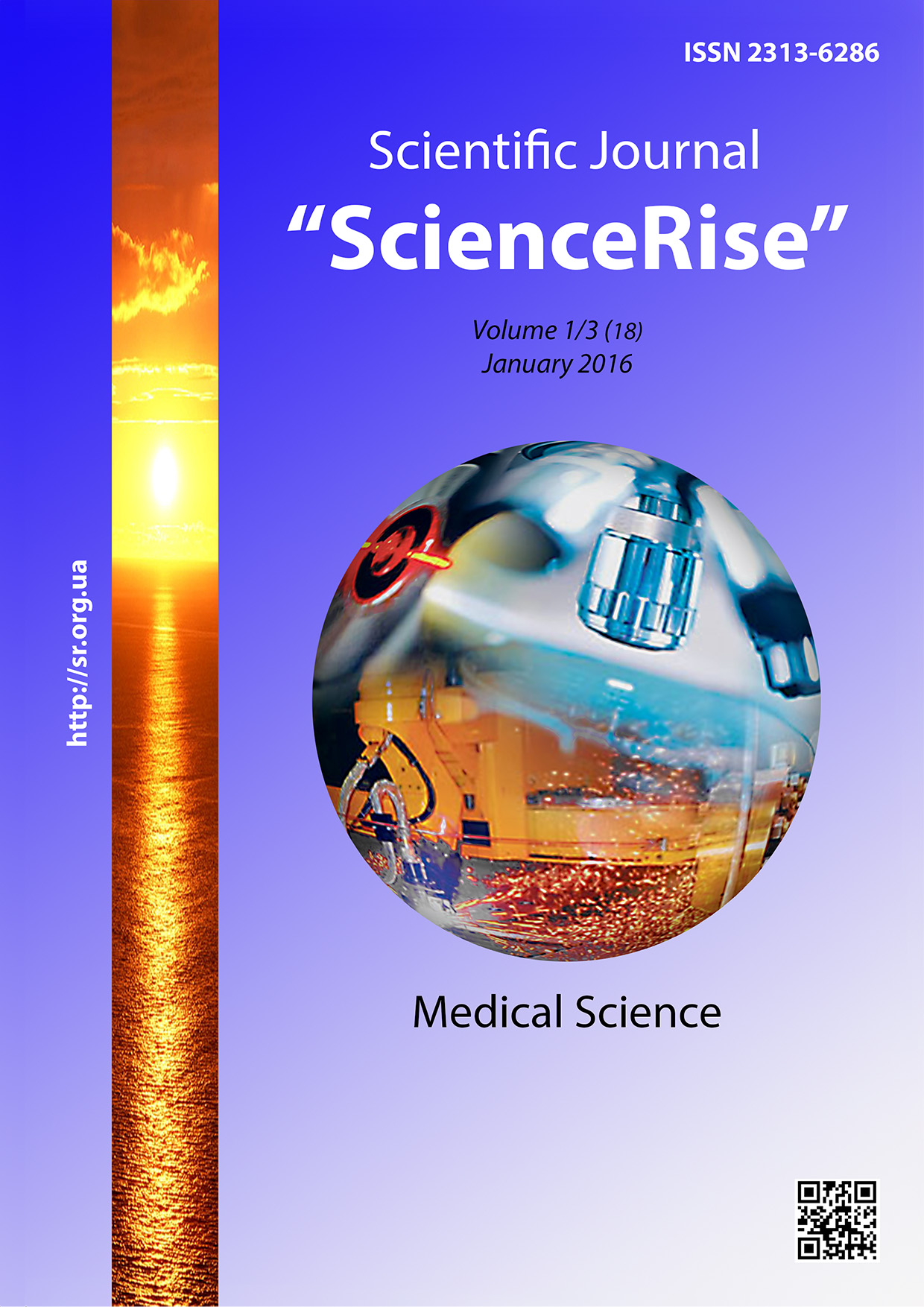The analysis of perinatal morbidity and mortality in conditions of perinatal center and the ways of its decrease
DOI:
https://doi.org/10.15587/2313-8416.2016.59267Keywords:
perinatal morbidity and mortality, perinatal center, infectious and inflammatory lesions of foetus, pre-term birthAbstract
Aim of research. The analysis of perinatal morbidity and mortality in the condition of one perinatal center of Ukraine and optimization of the possible ways of its decrease.
Methods of research. There was analyze the work of Kharkiv regional center in 2011–2015 years taking into account the rates of perinatal morbidity and mortality and factors that have influence on it. There were studied the next parameters: the number of newborns, its apportionment on the weight category, survival, general morbidity, mortality structure of the full-term and premature children. Statistical processing of the received results was carried out using Statistica 6.0 program.
Results of research. The frequency of normal delivery in perinatal center is in average 58,9 %. The rates of neonatal mortality decreased– 4,11 ‰ (in 2011 year – 8,23 ‰) and early neonatal one – 3,34 ‰ (in 2011 year – 6,44 ‰). The survival of newborns with extremely low body weight (500- 999 g) in first 0-168 hours was 62,50 %; with body weight 1000 – 1499 g – 82,35 %; with body weight at delivery 1500-2499 g was 98,17 %, survival of newborns with body weight > 2500 g in the first 0-6 days was 99,75 % .
The morbidity structure of full-term children still almost unchangeable during the last 5 years: asphyxia, congenital defects of development, arrest of foetus growth, cerebral ischemia, intrauterine infection, birth trauma. The morbidity structure of premature ones: respiratory disorder syndrome, intrauterine infection; asphyxia, congenital defects of development, arrest of foetus growth.
Among the mortality causes the main ones were congenial defects of development (prevailed in full-term children) and intrauterine infection (on the first place in premature children). The perinatal mortality rate in 2015 year was 18,22 %о, in 2011year – 26,65 %о .
The maternal foetus infection is the very frequent cause of stillbirth and pre-term birth and as the result the birth of small premature children with intrauterine defects of infectious character that considerably worsen the prognosis for newborns. The timely diagnostics and treatment of pregnant from the risk group as to infectious and inflammatory injuries of foetus on the background of complex organization measures allows considerably decrease the rates of perinatal morbidity and mortality.
Conclusion. Analysis of the work of perinatal center indicates the high efficiency of such III level institutions of the obstetrical help in the decrease of perinatal morbidity and mortality in Ukraine. It is necessary to pay the special attention to prophylaxis and treatment of intrauterine infection of foetus as one of the main causes of perinatal mortality and morbidity especially in premature newborns and its timely prevention
References
Znamenskaja, T. K. (2011). Pryorytetnye napravlenyja razvytyja perynatal'noj sluzhby v Ukrayne. Neonatologija, hirurgija ta perynatal'na medycyna, 1 (2), 6–10.
Mogilevkina, I. A. (2012). Audit perinatal'nyh poter' v usovershenstvovanii perinatal'noj pomoshhi v Ukraine. Kyiv: “Polіgraf pljus”, 298–302.
Kvashenko, V. P. (2012). Rol' vprovadzhennja systemy regionalizacii' perynatal'noi' dopomogy. Kyiv: “Poligraf pljus”, 235–238.
Grishhenko, O. V., Bobrickaja, V. V., Demchenko, O. B. (2011). Puti reshenija problemy perinatal'nyh poter'. Kyiv: Іntermed, 205–209.
WHO Recommended interventions for improving maternal and newborn health (2009). World Health Organization. Geneva, 6. Available at http://apps.who.int/iris/bitstream/10665/69509/1/WHO_MPS_07.05_eng.pdf
Tanaka, S., Stock, S. J., Yamamoto, Y., Kondejewski, J., Olson, D. M. (2010). Understanding perinatal mortality. Obstetrics, Gynaecology & Reproductive Medicine, 20 (11), 317–322. doi: 10.1016/j.ogrm.2010.08.004
Alshebly, M., Sobaih, B. (2013). Perinatal mortality over 15 years period in the central region of Saudi Arabia. Vienna, 89.
Nasishheva, S. M., Mihel'son, A. F., Feoktistova, T. E. et. al (2012). Analiz prichin antenatal'noj gibeli. Moscow, 119–121.
Vdovychenko, Ju. P., Gojda, N. G. (2011). Kryterii' vyznachennja bazovogo likuval'nogo zakladu dlja stvorennja regional'nogo perynatal'nogo centru. Kyiv, 7.
Larsen, B., DeSeta, F., Hwang, J., Merialdi, M., Tirán-Saucedo, J. (2010). Infectious Diseases and Prematurity. Infectious Diseases in Obstetrics and Gynecology, 2010, 1–2. doi: 10.1155/2010/163046
Lasswell, S. M., Barfield, W. D., Rochat, R. W., Blackmon, L. (2010). Perinatal Regionalization for Very Low-Birth-Weight and Very Preterm Infants. JAMA, 304 (9), 992. doi: 10.1001/jama.2010.1226
Aganezov, S. S., Aganezova, N. V. (2015). Vozmozhnosti snizhenija riska prezhdevremennyh rodov s pozicii dokazatel'noj mediciny. Akusherstvo i ginekologija, 4, 62–68.
Romanenko, T. G., Chajka, O. I., Gopchuk, E. N. (2012). Puti snizhenija perinatal'nyh oslozhnenij v akusherstve. Zdorov'e zhenshhiny, 10 (76), 32–34.
Downloads
Published
Issue
Section
License
Copyright (c) 2016 Нана Мерабівна Пасієшвілі

This work is licensed under a Creative Commons Attribution 4.0 International License.
Our journal abides by the Creative Commons CC BY copyright rights and permissions for open access journals.
Authors, who are published in this journal, agree to the following conditions:
1. The authors reserve the right to authorship of the work and pass the first publication right of this work to the journal under the terms of a Creative Commons CC BY, which allows others to freely distribute the published research with the obligatory reference to the authors of the original work and the first publication of the work in this journal.
2. The authors have the right to conclude separate supplement agreements that relate to non-exclusive work distribution in the form in which it has been published by the journal (for example, to upload the work to the online storage of the journal or publish it as part of a monograph), provided that the reference to the first publication of the work in this journal is included.

